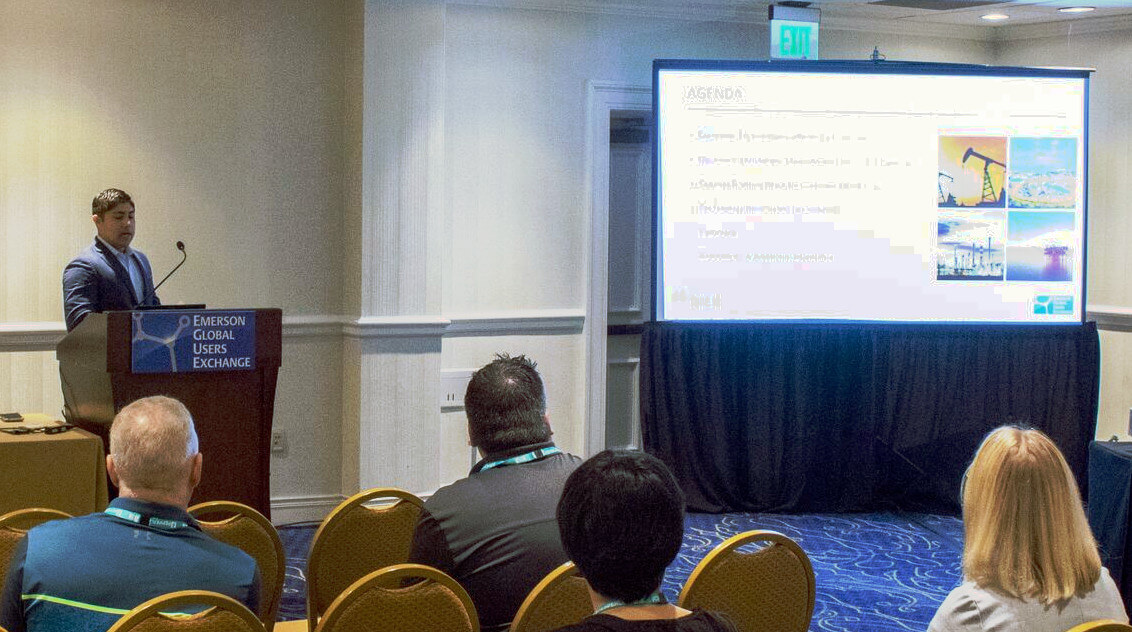 Emerson’s Justin Vasquez presented Seek Out Hidden Operational Optimization through Corrosion Monitoring at the 2019 Emerson Exchange conference. Justin opened noting that corrosion and erosion monitoring occur throughout the hydrocarbon value chain—upstream, midstream and downstream.
Emerson’s Justin Vasquez presented Seek Out Hidden Operational Optimization through Corrosion Monitoring at the 2019 Emerson Exchange conference. Justin opened noting that corrosion and erosion monitoring occur throughout the hydrocarbon value chain—upstream, midstream and downstream.
He highlighted the main forms of measurement—conventional UT (ultrasonic transmitter) thickness logging, phased array internal corrosion monitoring, 3D scanning and Smart PIGs (UT). Emerson offers a full line of corrosion and erosion monitoring.
Permasense wireless sensors provide direct metal thickness measurements and the impact of corrosion or erosion on pipes at any location. The Roxar Field Signature Method (FSM) provides monitoring for an area pule more specific localized corrosion and it requires no maintenance. FSM provides a topographic map to show the areas where metal loss is greatest.
An acoustic sensor is used for upstream oil & gas to measure sand abrasion in high-pressure gas wells. It is also available as a pig detector.
Inline corrosion probes and coupons sense the corrosiveness of the fluids flowing through the pipes. They are highly responsive to changes in the fluid. Coupons are one of the oldest forms of corrosion measurement.
Justin notes that corrosion monitoring can be for evaluating risk or measuring the impact of corrosion and the actual metal loss and current wall thickness. Refining applications typically use both types of monitoring.
In upstream oil & gas applications, corrosion monitoring with probes can help determine the volume of chemical inhibitors are required to combat corrosive fluids. These probes help avoid over injection which adds costs to the production process.
For refiners, the combination of fast-response intrusive probes and non-intrusive wall thickness monitoring gives a good solution for general and localized corrosion.
All of this data from these probes can be collected in the Roxar Fieldwatch application which provides a “traffic light” type status to provide early warning when closer inspection and remediation may be required. Typical roles that review this information are corporate technology managers, operations managers, reliability managers, and turnaround managers.
